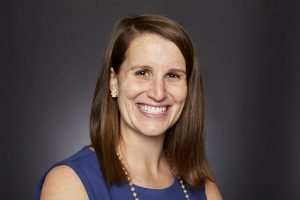
Whether you’re looking for technical or business opportunities, a strong resume will help you stand out from the crowd and make a good first impression. But resume creation is an art, not a science, and starting from scratch can feel daunting.
Never fear – our intern Program Manager, Kristen Garbarino, is here! She sees thousands of student resumes each year, so we asked for her take on how-to’s and best practices. From length to GPA, she’s tackling the tough questions and sharing her best tips for student resume success.
Without further ado, let’s get into it.
What’s your objective?
First up: the objective statement. You may be tempted to skip it, but Kristen recommends starting your resume off strong with 2-3 sentences to grab the attention of the reader and give them an idea of what to expect from the rest of your resume. “Focus on the benefits you’ll bring to the table, what role you’re targeting, and who you are as a person,” she says.
Education and skills
After your objective statement, share your education, school projects and hard skills. “School projects are often a missed opportunity, and they often relate to what we’re hiring for,” Kristen shares. “Don’t leave them off just because they weren’t a job!”
It’s also important to include your anticipated graduation date. When it comes to GPA, Kristen says it can go either way: “If you have above a 3.0, put it on there. If your GPA is below that, it’s OK to leave it off.”
Experience +
Next, list work experience in reverse chronological order, prioritizing the most relevant experiences. “Take a look at the job description and focus on what connects,” says Kristen. “You don’t have to include everything you’ve ever done – focus on what relates to the job.”
If you don’t have any professional experience yet, include any training you’ve completed and focus on projects and coursework that relate to the job. “Everyone starts somewhere, don’t let it intimidate you!” says Kristen.
After your work experience, list any leadership roles, campus involvements, volunteerism, awards or other achievements you’d like to share. This is also a great place to share any personal, non-academic projects that are relevant to the job. “If you’ve been working on any hobby coding or other relevant personal projects, let us know!” says Kristen. “These projects show passion and initiative – don’t let it be a missed opportunity.” Consider linking your GitHub or other personal website to provide extra context.
Spice it up!
Now that the content is there, it’s time to spice it up! Highlight key achievements with action words like “produced,” “developed,” “achieved,” etc. If you need some wording inspiration, check out this list.
Kristen also recommends quantifying achievements wherever possible. For example, instead of “Led social media campaign,” include the end result: “Led social media campaign resulting in a 20% increase in engagement over 6 months.”
Edit, review and review again
Once you’ve done the hard work, Kristen suggests printing a hard copy of your resume to help catch pesky typos. “It can be hard to catch them yourself after you’ve been looking at it for so long,” she shares. “Don’t hesitate to phone a friend for a quick peer review!”
For length, a page is common. But if you truly need more space, two pages (or even 1.5) is OK, too: “Use as much space as you need to fit relevant content,” Kristen says. For font, go with something easy to read like Arial or HP Simplified. “You probably don’t want to go smaller than 9-point font, but you can narrow the margins to create extra space if you need it.”
And if you’re waffling on whether or not to include a photo, consider Kristen’s take: “My recommendation is that a photo isn’t needed on a resume. It doesn’t help you stand out, and we prefer not to have that included in our review process.” Use that space for something more meaningful – like your GitHub URL or other personal website.
Phew – that was a lot. What now?
Creating a resume from scratch can feel overwhelming, but take heart – you’ve already started by reading this blog! To keep the momentum going, Kristen recommends setting a goal date, spending a couple hours on changes, and then updating every 6 months to keep it fresh.
If you have a favorite resume tip, drop it in the comments below! And if you’re interested in starting your career at SAS, visit sas.com/intern to apply for our award-winning internship program and read up on our intern hiring process.
Apply for SAS' Award-Winning Internship Program
